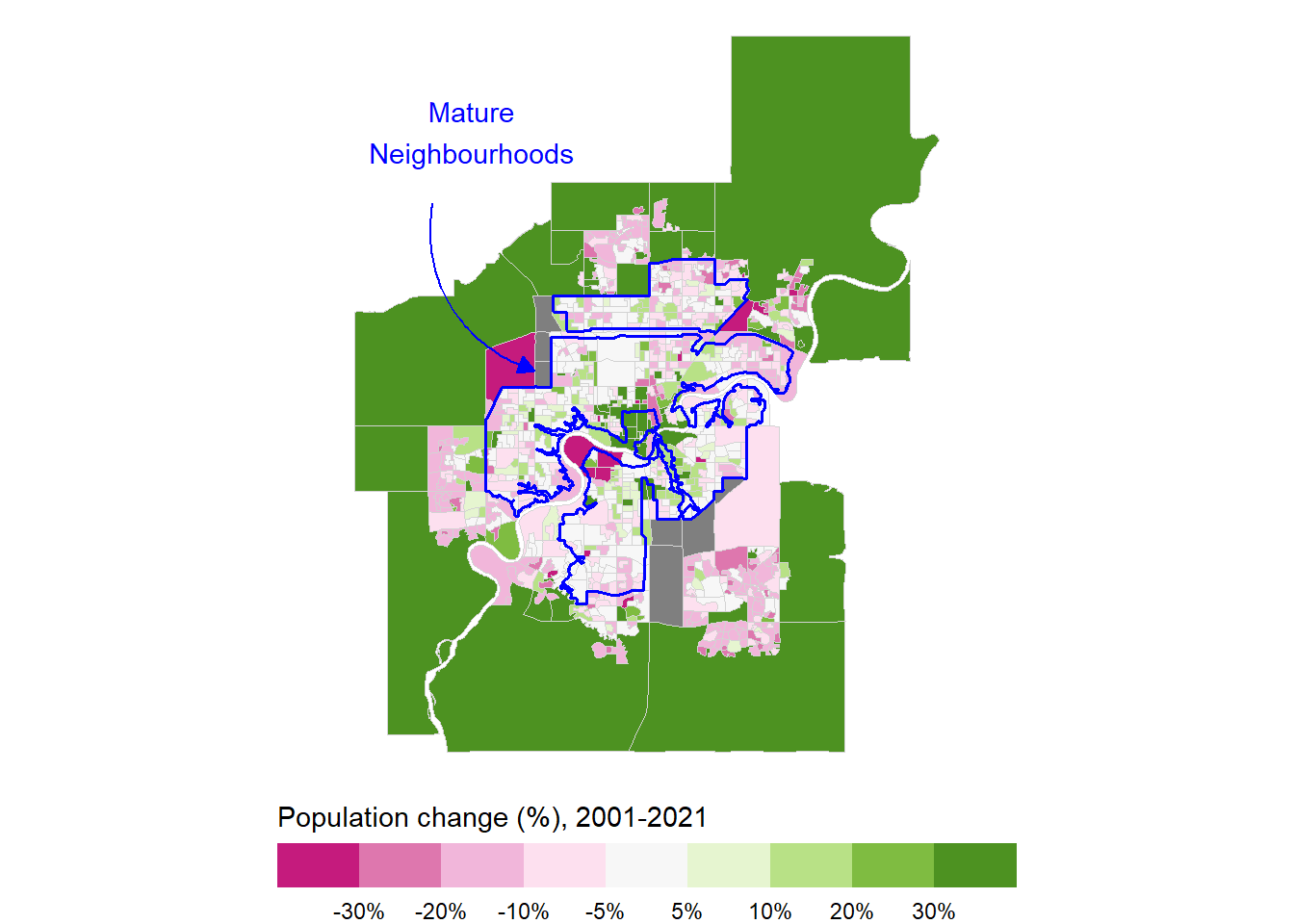
Edmonton, final frontier of housing affordability
In June, I moved across the country to Edmonton with my girlfriend who matched to residency at the Stollery hospital. Since then, I have gotten involved with Grow Together Edmonton, a pro-housing organization that’s starting to get off the ground.
Edmonton has long been a leader in land use in Canada, ending single-family zoning in 2019 and removing minimum parking requirements in 2020. When I advocated with More Neighbours Toronto, we often used Edmonton as an example of how permitting more housing could create the conditions for market housing affordability.
Being an early adopter of zoning reform has largely worked. Housing in Edmonton is still affordable, relative to other Canadian cities. We had no problem finding a suitable rental apartment in a walkable neighbourhood – for the same price as a bachelor apartment in downtown Toronto. We were even able to negotiate rent decreases because of long vacancies, something that is unheard of in Ontario. However, Edmonton is starting to see rents increase quickly, like the rest of Canada as it grapples with increases in demand and the limitations of sprawl.
Zoning by-law renewal
The good news: City Planning is bringing its final proposal for Zoning By-Law renewal to council on October 16. This is mostly a simplification of the number of zones, but also includes an important step of removing the Mature Neighbourhood Overlay (MNO). The MNO is an additional zoning regulation that has the effect of restricting new housing in some of Edmonton’s central, most in-demand neighbourhoods. It includes such hits as:
Controlling window locations.
Imposing large front setbacks, perpetuating wasteful land use on front lawns.
Maximum heights of 8.9m.
These regulations are generally more restrictive than the zoning for the inner or outer suburbs. This seems counterintuitive, as the most central neighbourhoods generally have the most demand and should thus have more permissive zoning.
Wherever you find a form of exclusionary zoning, like the MNO, you will inevitably find distortions, whether it be uneven population growth, income segregation or full schools in some neighbourhoods while others go empty. Being a data nerd, I put together some maps with census data (thanks to the Tongfen developers) and school data (thanks to Yash Bhandari for scraping).
Population growth, or stagnation?
Population growth in Edmonton is uneven. As shown in Figure 1, it’s been the outer parts of Edmonton that have seen the most population growth over the past 20 years. Some other areas, like downtown have also seen growth. The inner geography, including mature neighbourhoods have largely remained stagnant or declined in population, even as the city as a whole grew 52% over the past two decades.

Zooming into the MNO for a closer look in Figure 2, it’s the same story. Neighbourhoods have largely declined in population or remained stagnant. Remember: a 5-10% increase is really nothing compared to 52% growth for the city overall.
This means that many neighbourhoods should have latent infrastructure to accommodate future growth. Especially with appliances becoming increasingly more energy efficient, concerns about not having enough infrastructure are unfounded in many cases and can otherwise be addressed through just building more. In all cases, statements saying mature neighbourhoods are “full” are just patently false.
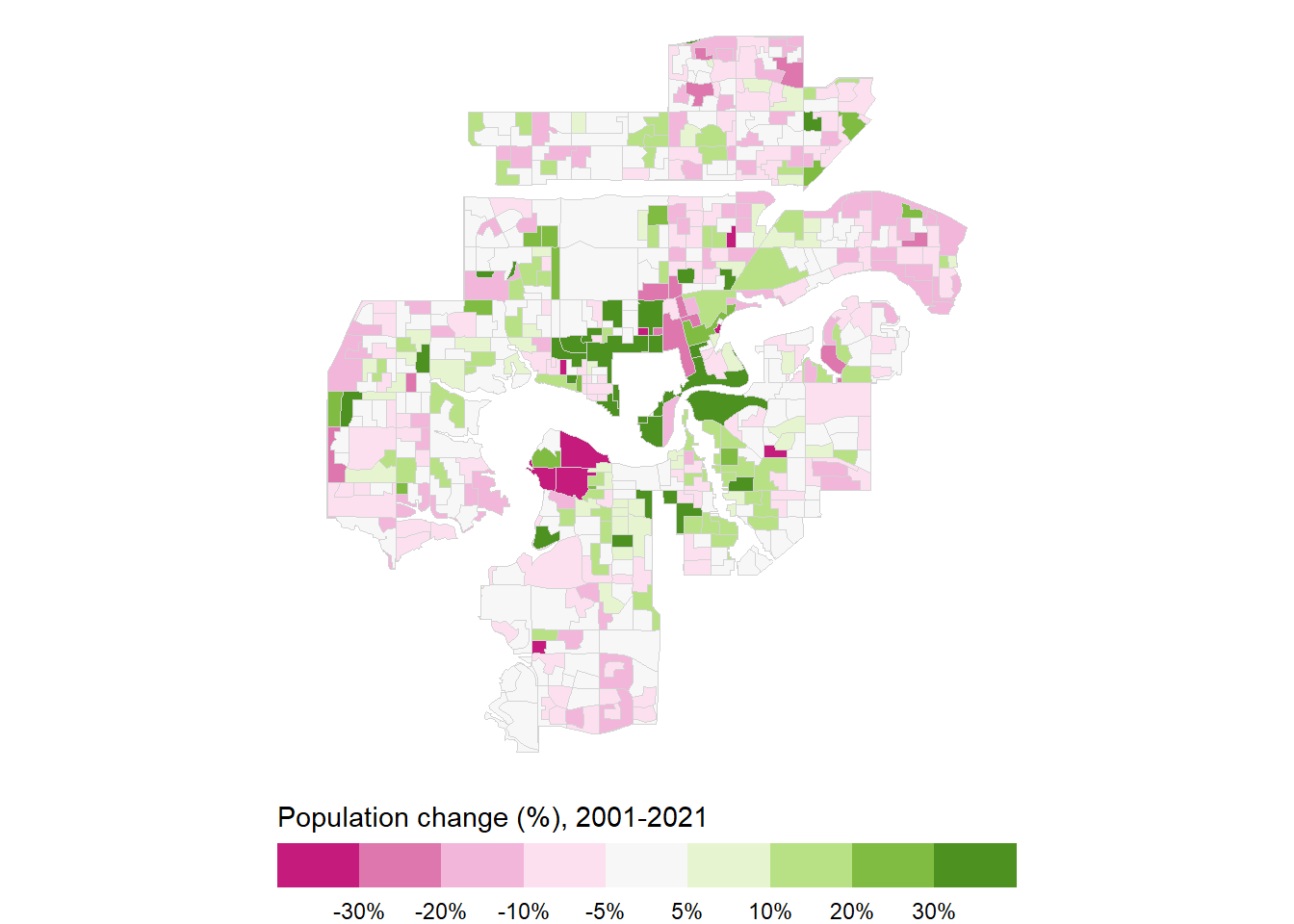
Edmonton has built housing outwards – and pretty much only outwards
Housing growth mirrors population growth as one would expect. Besides the outer suburbs, housing growth in most areas of Edmonton has stagnated as shown in Figure 3.
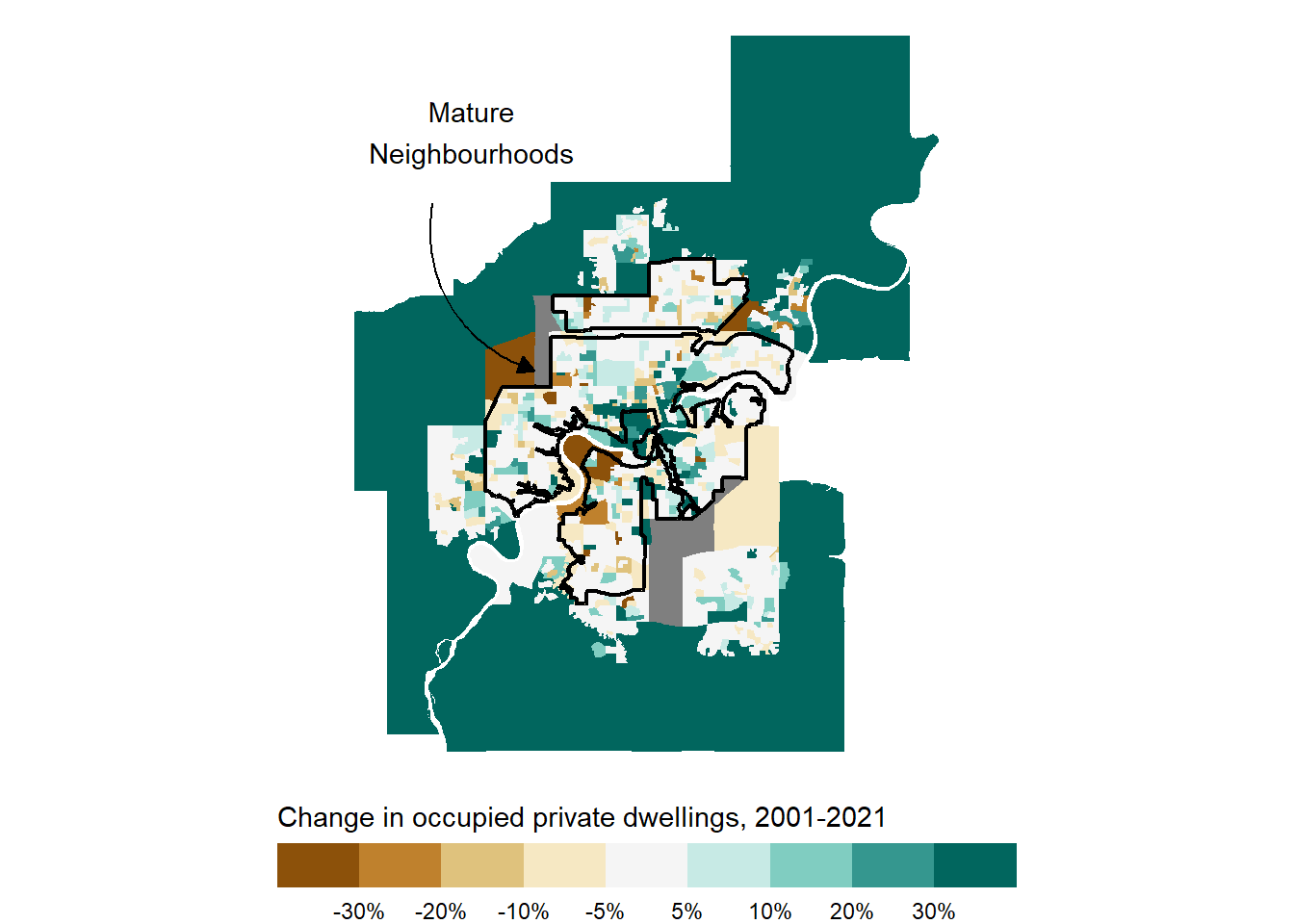
Zooming into mature neighbourhoods in Figure 4, we can see there’s been a few blocks here and there that have net added a significant amount of housing over the past 20 years. However, over most of the mature neighbourhoods area, there has been zero or slightly negative net dwelling growth. There is plenty of room in existing neighbourhoods to build more housing, welcome more neighbours and make more efficient use of existing infrastructure and amenities.
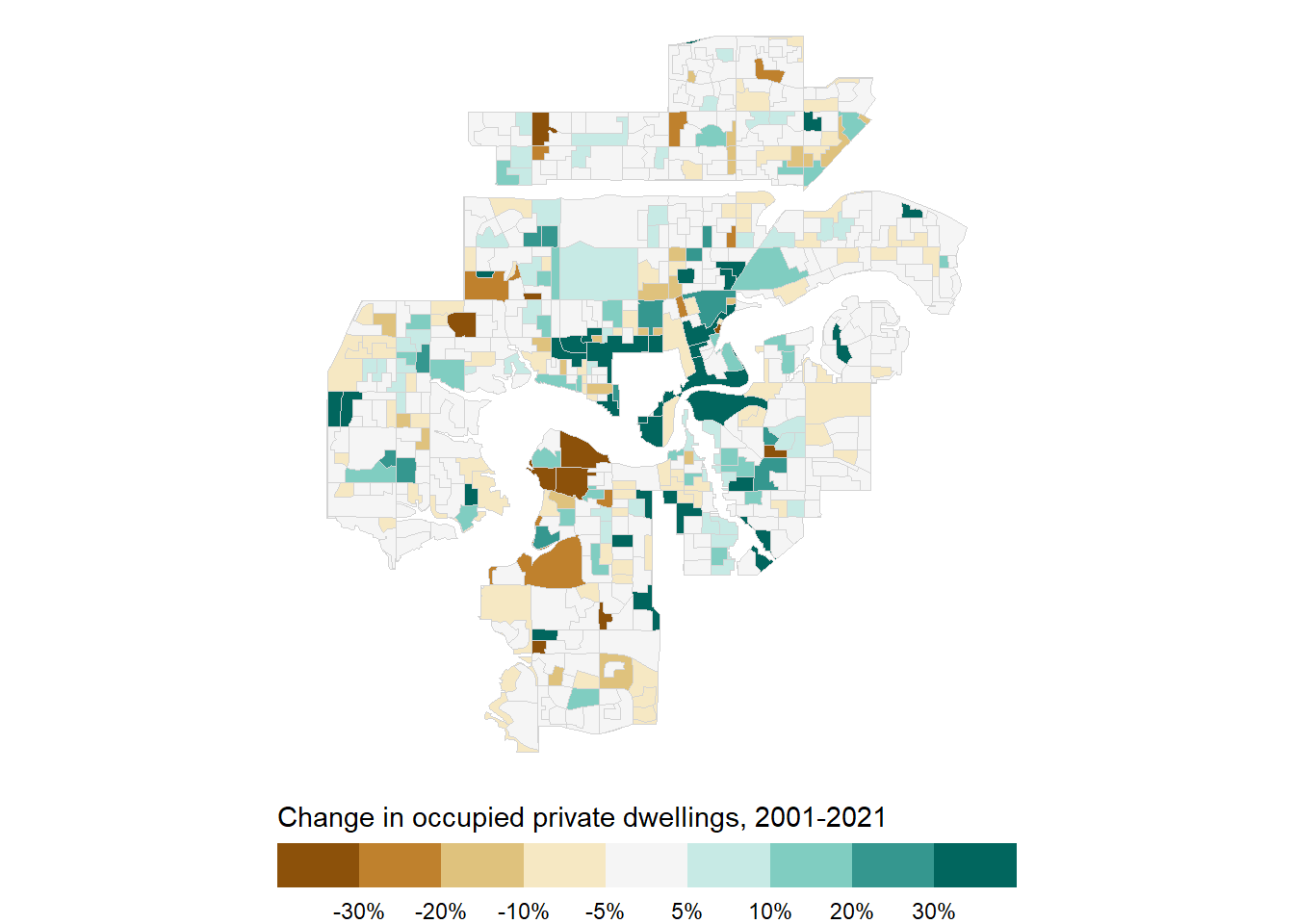
Schools in mature neighbourhoods have plenty of capacity
I’ve heard that across the continent, one of the biggest “concerns” is lack of school space. But, as I showed in Toronto, the opposite is usually true in mature neighbourhoods, where there is an overabundance of school capacity. I’d expect that to hold true in Edmonton as well since mature neighbourhoods have remained stagnant or declined in population, as we saw above.
In Edmonton, schools have assigned Growth Control Model (GCM) levels:
Level 1: open boundaries.
Level 2: nearing capacity.
Level 3: at capacity.
As shown in Figure 5, most schools are at GCM level 1, however, there are far more schools at GCM level 2 and 3 outside mature neighbourhoods than within. Very few schools are above GCM level 1 within mature neighbourhoods.
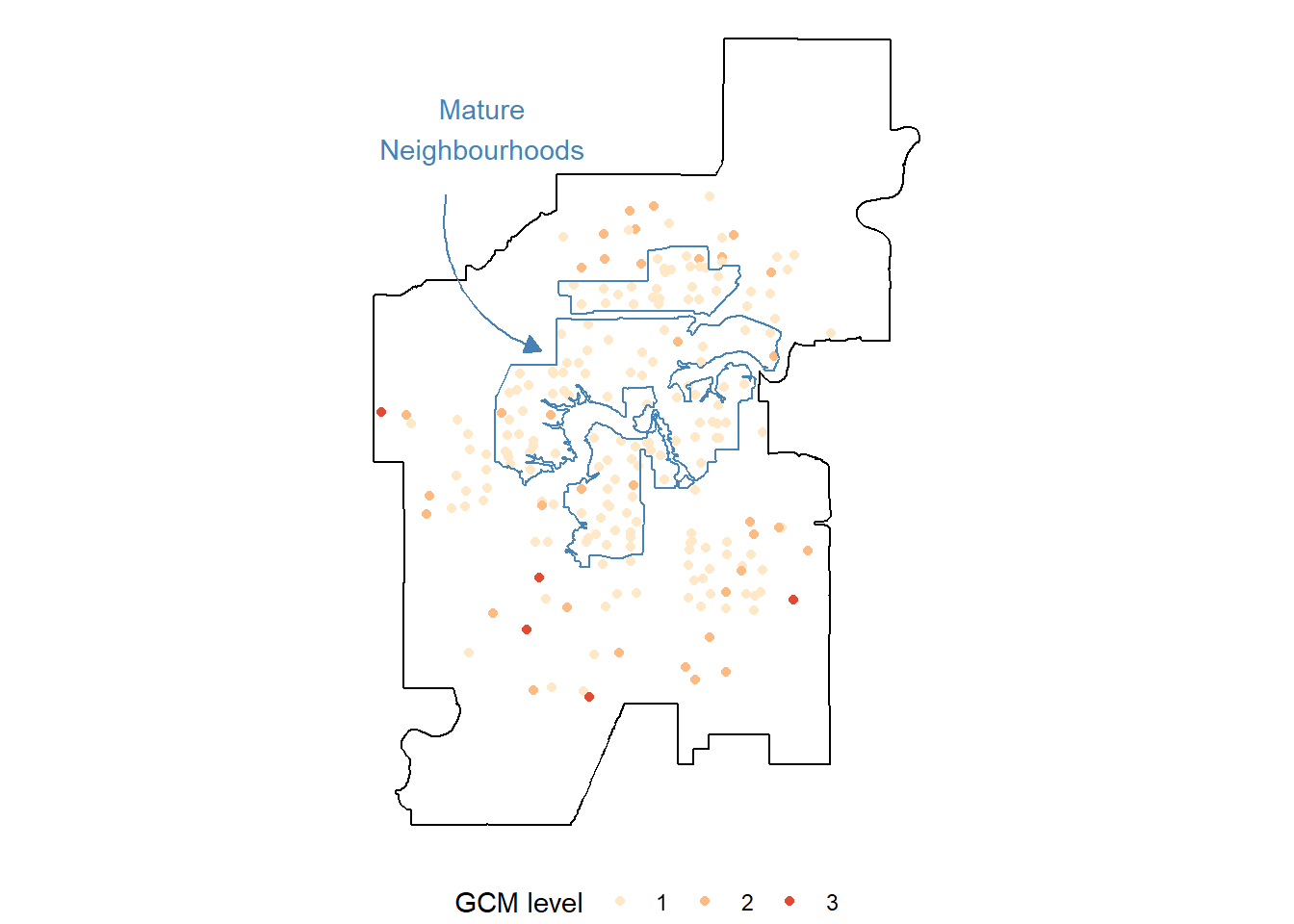
Just how big is the difference? A full third of schools outside mature neighbourhoods are in GCM level 2 or above, versus only 6% within mature neighbourhoods as shown in Table 1.
| Number of Schools by GCM level | |||
|---|---|---|---|
| Mature Neighbourhood | GCM level | ||
| 1 | 2 | 3 | |
| No | 66 (67%) | 28 (28%) | 5 (5%) |
| Yes | 110 (94%) | 7 (6%) | 0 (0%) |
| School data courtesy of Yash Bhandari. | |||
Take action
The Zoning By-Law renewal comes up for a public hearing on October 16. Please use Grow Together Edmonton’s tool to email your councillor in support of the renewal. If you can, please sign up to speak at the public hearing. Signing up only takes a minute:
Select “Public Hearing” and enter October 16 as the date
Where it asks for the agenda number and title, enter: 3.1 Zoning Bylaw Renewal
Select “In Favour” as your position